
All categories
Featured selections
Trade Assurance
Buyer Central
Help Center
Get the app
Become a supplier

(20518 products available)







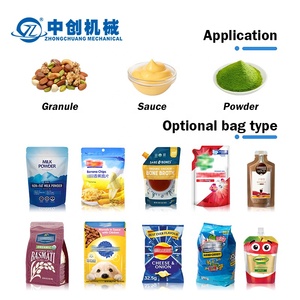



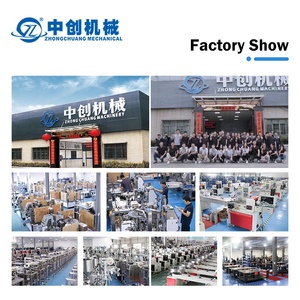


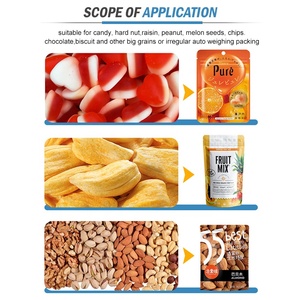


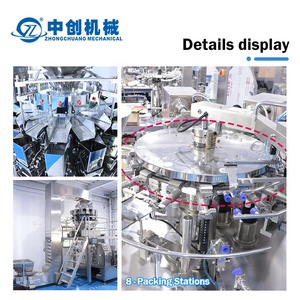
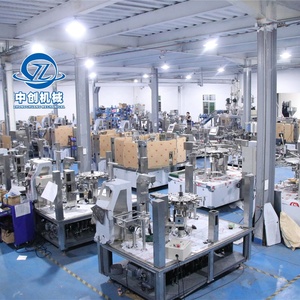

Automatic chips bagging machines are based on weighing, filling, and sealing the packages. They perform various functions, including detecting the number of products, automatically resealing, heat sealing, and vacuum sealing. They also include an automatic conveyor belt system that moves the products in a specific order for final packing, which is made possible by the sensor technology integrated into the machines. Two key categories of automatic chips bagging machines are as follows:
Packing machine for chips with a scale/settling unit:
Functionalities such as product weighing, filling, bag sealing, and counting the number of products are provided by packing machines with scales or settling units. These machines have scales and settling units built into them, which ensure the products' precise weight measurement before packing They ensure that the bags of chips are filled accurately, minimizing the risk of underfilling or overfilling. The scale then further identifies the number of items and their weights to provide better settling or counting. An example of a chips bagging machine with a scale is the WZH-14C weighing packing machine. The machine is suitable for packing bulk solid material into bags (generally 10kgs-50kgs) with the help of a computer control system, electric weighing apparatus, and photoelectric sensors. The machines use scales for measuring weights, and the error range is very low (less than 50g).
Doypack machine (Pillowpack):
The Doypack chips bagging machines are used to pack chips in standing pouches. In contrast, the Pillowpack packing machines pack chips in pillow-shaped bags. While both of them create a similar final product, their working techniques are entirely different from one another. The Doypack machine uses automated bag-making technology to fill and seal the bags from a roll of film. As the name suggests, the end of the bag has a convex shape that allows it to stand on the shelf, attracting customers. On the other hand, Pillowpack machines are more traditional and produce a western-style bag that resembles a pillow. They are cost-effective and highly efficient. Additionally, they are beneficial for products like chips that need to be packed quickly and in high quantities.
Machine specifications:
Speed:
The production speed of a bagging machine is usually measured in bags per minute and can vary depending on the model and design. For example, some models may have a speed of about 30-45 bags per minute. Higher speeds may be achieved in some automatic machines with more complex mechanisms and higher levels of automation.
Packaging sizes:
Automatic bagging machines can handle a wide range of bag sizes, from small snack/bite-sized bags to larger family-sized or bulk bags. The size can vary depending on the model and its features. For example, some machines may be able to package widths ranging from 200mm to 900mm and lengths from 300mm to 1200mm.
Power Supply:
The electrical requirements for bagging machines vary by model and application. Some models are designed for low-voltage electrical networks. For example, they may be powered by 12V DC and are designed for use in mobile or remote applications where access to standard AC power is limited. Others may require a three-phase power supply, such as 380-420V three phases, which is suitable for high-capacity industrial applications.
Operating environment:
Automatic bagging machines can be designed for a variety of operating environments. Some are suitable for use in humid or wet environments, such as those having an IP65 waterproof rating. Others are suitable for use in a chilly climate, where they can function well in temperatures as low as -20 degrees Celsius.
Maintenance of bagging machines:
Proper maintenance ensures automatic chips bagging machines are in good condition and operate efficiently and helps to avoid unexpected breakdowns and prolong the service life of the equipment. A few general maintenance tips are as follows:
Routine cleaning:
It is necessary to clean the machine on a regular basis to remove any residual particles or dirt that may have accumulated on it. This prevents clogging and contamination of the packaging.
Lubrication of parts:
Regular lubrication is to be performed on all moving parts of the machine, such as motors, slides, chains, etc. This reduces wear and enhances smooth operating.
Periodic inspection:
It is important to check the condition of the machine on a regular basis to inspect for possible problems such as looseness, wear, or damage of parts.
Replace filter elements:
For bagging machines equipped with a dust collection system, the dust extraction filters need to be replaced at regular intervals to ensure effective filtration and dust collection.
Manufacturing facilities:
Automatic chips bagging machines are the backbone of large-scale packing facilities. These machines streamline the process of pitiable chips into bags, which are at a high rate. With automation, chips bagging machines make packaging efficient, meeting the demands of busy factories.
Snack production lines:
In snack production lines, the goal is to quickly and perfectly bag various snacks. Multifunctional chips bagging machines are great for this because they can bag different kinds of snacks. They also have features that keep the snacks fresh.
Farms and food processors:
Farms and food factories that make potato products like chips and fries also use automatic bagging machines. These machines help with efficient packaging, whether for frozen potato products or ready-to-eat snacks.
Distribution centers:
In distribution centers, big quantities of products need to be bagged quickly and accurately for various stores and clients. Chips bagging machines can handle a variety of products, and they excel at high-speed, precise packaging, which is ideal for the demands of distribution.
Retail outlets:
Retail counters use automatic chips bagging machines to produce customized or private-label snack bags. These machines are flexible and can manage small quantities with different flavors and packaging. Chips bagging machines assist retail counters to provide clients with options and flexible grocery selections.
Warehouses:
In warehouses, snacks are prepared for storage and distribution. Chips bagging machines package the snacks in a convenient way, labeling it, and then it is placed in storage.
Catering services:
Catering services that provide snacks for events or gatherings can benefit from automatic chips bagging machines. These machines allow for the efficient packaging of individual snack bags for conferences, parties, or corporate functions. Customized packaging options and speed are essential for catering services, and chips bagging machines meet these requirements.
When selecting an automatic snack bagging machine for purchasing, it is essential to consider parameters such as the ability of the machine and the environment necessary for its implementation. It is also important to know what kind of machine it is and how it works so that everyone involved in handling the machine can be familiar with its workings and be fluent in operating it.
First of all, it is crucial to be aware of the needs of the business. This means that it is crucial to ascertain what kind of snacks are being manufactured and how many they are worth per hour, month, etc. Doing this analysis will allow companies to decide what features they will require from the machine so that the final product meets the expectations set by the in-depth examination of the company's needs.
The snacks' shape, size, and weight will also impact deciding which machine will be most suitable for the business's needs. It is essential to consider the packing styles the machine can accommodate, as pleasant-looking packing is crucial to making sales and developing a name in a market filled with competition. This factor will also have an impact on the kind of machine chosen; some may be able to use pouches, cartons, or cans, while others may have limitations and could be less versatile, which might not be suitable if variety is of the essence.
It is also essential to consider the monitoring system the machine employs so that the snacks are weighed and filled with accuracy every time. This ensures quality control and uniformity in packing, enabling businesses to maintain their standards. The labeling and sealing mechanisms vary from machine to machine, so it is fundamental to determine whether the ones on offer are up to the required standard and will be more than enough to cope with the demands of a business that is focused on, for example, never letting the chips fall.
Finally, it is also required to check the technicalities of the machines being considered for purchase. The energy requirement and consumption, dimensions and compatibility, operational efficiency, and the capacity of the feeding system are all critical elements. These are some every business must explore and consider, as going through them will enable them to finally enjoy a seamless integration of the bagging system with the rest of their production setup.
Q1: What types of snack bags does this machine work with?
A1: The bagging machine works with many different kinds of snack packages. It can work with chip bags, popcorn bags, pet food bags, and even other snacks like holes or crackers.
Q2: What is the maximum bag size that an automatic chip bagging machine can handle?
A2: Most bagging machines can work with bags that are around 14 inches wide and 30 inches long. This means they can handle big bags that are used for bulk packaging, as well as smaller ones for retail.
Q3: Can the machine fill bags with products that have different shapes and sizes, like chips, pretzels, and puffed snacks?
A3: Yes, the machine is made to be able to fill bags with all kinds of products, no matter what shape or size they are. It can handle items that are big and bulky, like chips and pretzels, as well as smaller ones, like rice or sugar. However, some exceptions might exist, like extremely sticky substances that need special handling requirements.
Q4: Can the bag sealing machine be integrated with existing production lines and equipment?
A4: Yes, most automatic bagging machines can be easily connected to other equipment used for making products, like mixing tanks and conveying systems. This helps create a smooth and efficient production process from start to finish.